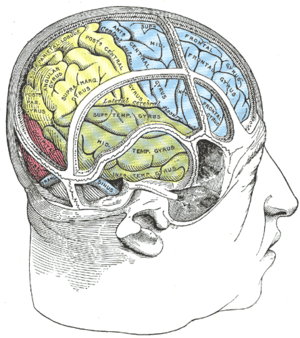A study using touch screen technology has shed light on how we evolved to be so intelligent, and how this development may have made us susceptible to mental illness.
Humans have been successful because of our ability to solve problems, and think flexibly about the world around us. It seems, however, that some of the genes that allow us to do so are much older than our species- they date back to when we shared a common ancestor with mice.
A multi-disciplinary study by researchers from 8 different institutes, led by Bussey and Grant, compared human and mouse intelligence, using touch screen tasks which can be adapted to work for both humans and mice.
 They compared mice with mutations to different genes within the same family, which are involved in creating signalling molecules found in the brain. Invertebrates, which (with a few exceptions) are thought to be less intelligent than vertebrates, have only one of these genes. 550 million years ago, however, the vertebrate genome duplicated itself not once, but twice, and most vertebrates have retained several versions of this gene.
They compared mice with mutations to different genes within the same family, which are involved in creating signalling molecules found in the brain. Invertebrates, which (with a few exceptions) are thought to be less intelligent than vertebrates, have only one of these genes. 550 million years ago, however, the vertebrate genome duplicated itself not once, but twice, and most vertebrates have retained several versions of this gene.
They found that mice missing one of these genes could not complete even simple learning tasks. 2 of the others had a, interacting pattern, affecting different, more complicated learning and attention tasks. It seems that these 2 genes work in opposition to each other, to control higher level cognitive abilities.
Humans and mice diverged from their common ancestor 100 million years ago, yet it seems that some of the genes which allow us to learn about the world are the same as those found in mice. Humans with the equivalent of one of the mutations exist, and when tested on similar tasks, showed a corresponding pattern of ability. These individuals also seem to be at higher risk of developing schizophrenia, and the pattern of cognitive deficits seen in the mice matches that seen in sufferers of the illness.
The other mutation is interesting, as it seems that the mice without this gene performed better than normal mice, with very high visual discrimination and attention abilities. It seems odd that a gene would have evolved to make us worse at these tasks. However, autistic people are also very good at these types of task, so it may be that this gene keeps these abilities under control to enhance other abilities.
The whole genome duplication that permitted the development of these genes may have allowed us to think more flexibly, and to survive better in a complicated and changing world. However, it seems that susceptibility to mental illness may be the price we have to pay for this intelligence.









Comments
Add a comment